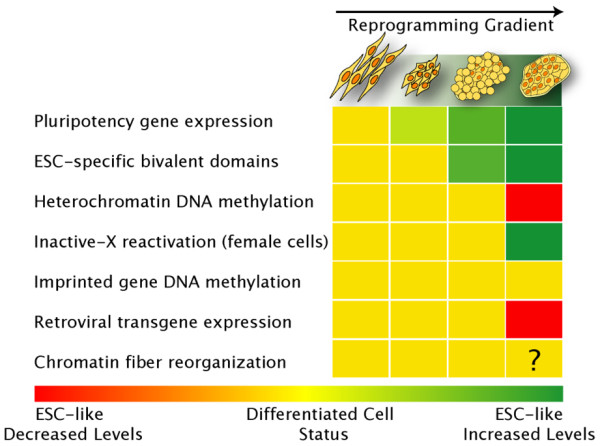Figure 1.

Dynamic epigenetic changes characterize the gradual reprogramming process. Four stages of reprogramming are illustrated as differentiated starting cell type (that is, murine embryonic fibroblasts), intermediate, partially reprogrammed induced pluripotent stem (iPS) cells and fully reprogrammed iPS cells. Activation of pluripotency-associated loci results in iPS cells' ability to stably self-renew and precisely control the embryonic stem cell (ESC)-like transcriptional profile. Proper histone methylation levels at the right genomic regions establishes bivalent chromatin domains not necessarily involved in the induction to pluripotency but required for proper differentiation capacity of iPS cells. DNA methylation levels are reduced in female ESC and iPS cell lines at heterochromatic satellite repeat elements. The functional significance of DNA hypomethylation is currently not understood but could be a reflection of the reactivated inactive-X chromosome. On the other hand, DNA methylation marks of imprinted genes remain protected from demethylation and are comparable to the levels in the starting cell type. Finally, it is not known whether extensive epigenetic changes accompanying the reprogramming process result in physical structural changes to the chromatin fibers themselves.
